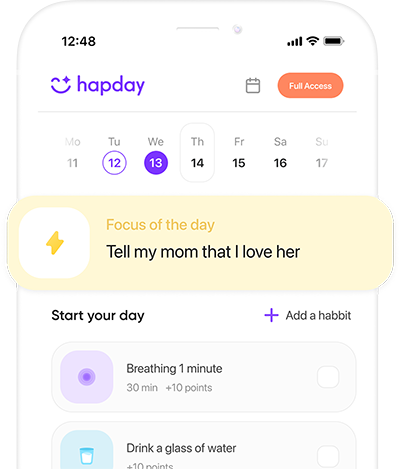Table of Contents
- What Even Is Childhood Trauma?
- When Trauma Sticks Around: Long-Term Effects
- The Science-y Magic Behind Healing
- Step 1: Own Your Experience
- Step 2: Go See the Pros
- Step 3: Grow Your Emotional Muscles
- Step 4: People Power
- Step 5: Indulge in Self-Care, With a Pinch of Self-Compassion
- Step 6: Weave Those Memories Back
- Step 7: Seek Growth Beyond Trauma
- Step 8: Know Your Triggers
- Step 9: Keep On Keeping On
- An Open-Ended Conclusion
What Even Is Childhood Trauma?
When Trauma Sticks Around: Long-Term Effects
Here’s a little nugget from the past. Anyone remember the Adverse Childhood Experiences (ACE) Study? Conducted back in 1998 by the CDC and pals at Kaiser Permanente, it painted a stark picture: the more adversity folks faced as kids, the likelier they were to wrestle with chronic ills like anxiety, depression, or even heart disease later on. It’s like these old battles secretly lace into life’s fabric: from messy attachment styles (forget trusting people), emotional roller coasters, and brainy struggles like remembering where you left your keys… again.
The Science-y Magic Behind Healing
Hoist the sails—our adventure towards healing begins with understanding, feeling those messy feelings, and turning life’s pages in a way that doesn’t make you wince at the sight of the old chapters.
Step 1: Own Your Experience
First things first: say it with me—deep breath—“this happened.” Tough stuff, huh? But acknowledging trauma isn’t just grim work; it’s the first shake of the door to freedom. A fascinating read, once caught my eye in the Journal of Nervous and Mental Disease. It pointed out how people who accepted their trauma rather than shoving it under a metaphorical rug seemed to say goodbye to a chunk of their distress. Therapy helps, as does journaling your heart out.
Step 2: Go See the Pros
Think of therapists as seasoned guides through the spooky forest that is trauma recovery. Cognitive Behavioral Therapy (CBT) is like King Arthur’s sword in this realm—a JAMA Psychiatry meta-analysis gave it the thumbs up for easing PTSD symptoms. Then there’s that eye-tricky EMDR stuff. Sounds like something from a sci-fi flick, right? But nope, it’s real, working wonders as detailed in the American Journal of Psychology.
Step 3: Grow Your Emotional Muscles
Resilience isn’t just a buzzword; it’s how we spring back when life throws us for a loop. Mindfulness, I say—cultivating that present-moment awareness can nudge anxiety and depression out of the driver’s seat (true story from Clinical Psychology Review). And let’s not sleep on exercise. It’s not just for the calorie counters. Frontiers in Psychology would back me up here, noting how movement can lighten mood and stifle those pesky PTSD shadows.
Step 4: People Power
Lean on me—those golden lyrics ring true when healing trauma. Building connections is like creating a safety net to catch you when you stumble. Research in the Journal of Traumatic Stress would agree that good company makes the bumpy road smoother. Plus, having your own little support tribe? Irreplaceable.
Step 5: Indulge in Self-Care, With a Pinch of Self-Compassion
Imagine caring for a plant. Now, picture you’re that plant. Self-care is tending to your roots, your petals. Self-compassion? That’s your heartfelt gardener. Mindfulness journal once sang praises of self-compassion for lowering anxiety and making stress take a back seat.
Step 6: Weave Those Memories Back
Integration. Such a fancy word for a real human process—figuring out how past traumas fit into your story without ruling every chapter. Narrative Exposure Therapy (NET), as the good folks at Psychological Trauma remind us, can help pen those tales, smoothing the rough edges.
Step 7: Seek Growth Beyond Trauma
Post-traumatic growth—it sounds poetic, doesn’t it?? It’s the part where you look back and find growth in the ashes. Aiming for new heights, staying grounded in your values, focusing on personal leaps, and living out what you’ve learned.
Step 8: Know Your Triggers
Triggers aren’t merely “in your head.” Nope. They’re sneaky reminders that lurk around corners. But you can outwit them. It’s all about grounding, reassessing your thoughts, and frankly, occasionally dodging recognizable alarms.
Step 9: Keep On Keeping On
This isn’t a syllabus with a clear end date. Healing is an ongoing saga. You read, learn, and read some more. It’s workshops (yes, those seminars your daring friend convinced you to join) and honest feedback from trusted voices.
An Open-Ended Conclusion
Look, I’m not here to sell you some heartfelt, fairy-tale ending. Healing’s one heck of a roller coaster—chaotic loops, unexpected turns, but moments where you’re coasting, sleeves flapping in the wind. The steps I walked you through above, they’re not finite. But like old recipes passed through seasoned hands, you add your own flavors, your own flair. Remember, though trauma may be part of your backstory, it doesn’t call the shots. It’s the healing, growth, and your resilience that writes the chapters of your life yet to come. And if I may add—turn them pages in your own rhythm.


This post truly resonates with me. The way you explained the importance of owning your experience really hit home. It’s so easy to ignore what we’ve been through, but acknowledging it is such a powerful step toward healing. Thank you for shedding light on this topic!
Absolutely! I think many people underestimate the power of acceptance in the healing journey. It’s like finally taking off a heavy backpack you didn’t realize was weighing you down.
I agree! I’ve been journaling about my experiences lately, and it feels liberating to put my thoughts into words.
I love how you mentioned building connections as part of healing. It’s amazing how supportive friends can really help lighten the load we carry from our past traumas.
So true! Having a solid support system has made all the difference for me. It’s comforting to know others are there to help navigate those tough moments.
‘People Power’ is such a great concept! I’ve found that sharing my experiences with trusted friends brings so much clarity and relief.
‘Post-traumatic growth’ is something I find both fascinating and hopeful! The idea that we can rise from our past struggles stronger than before gives me so much motivation.
‘Keep On Keeping On’ – what a perfect reminder that healing isn’t linear! I’ve had my ups and downs, but embracing that journey has helped me accept myself more fully.
Exactly! Each step taken, no matter how small, is progress worth celebrating.